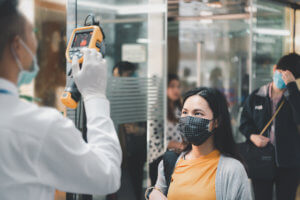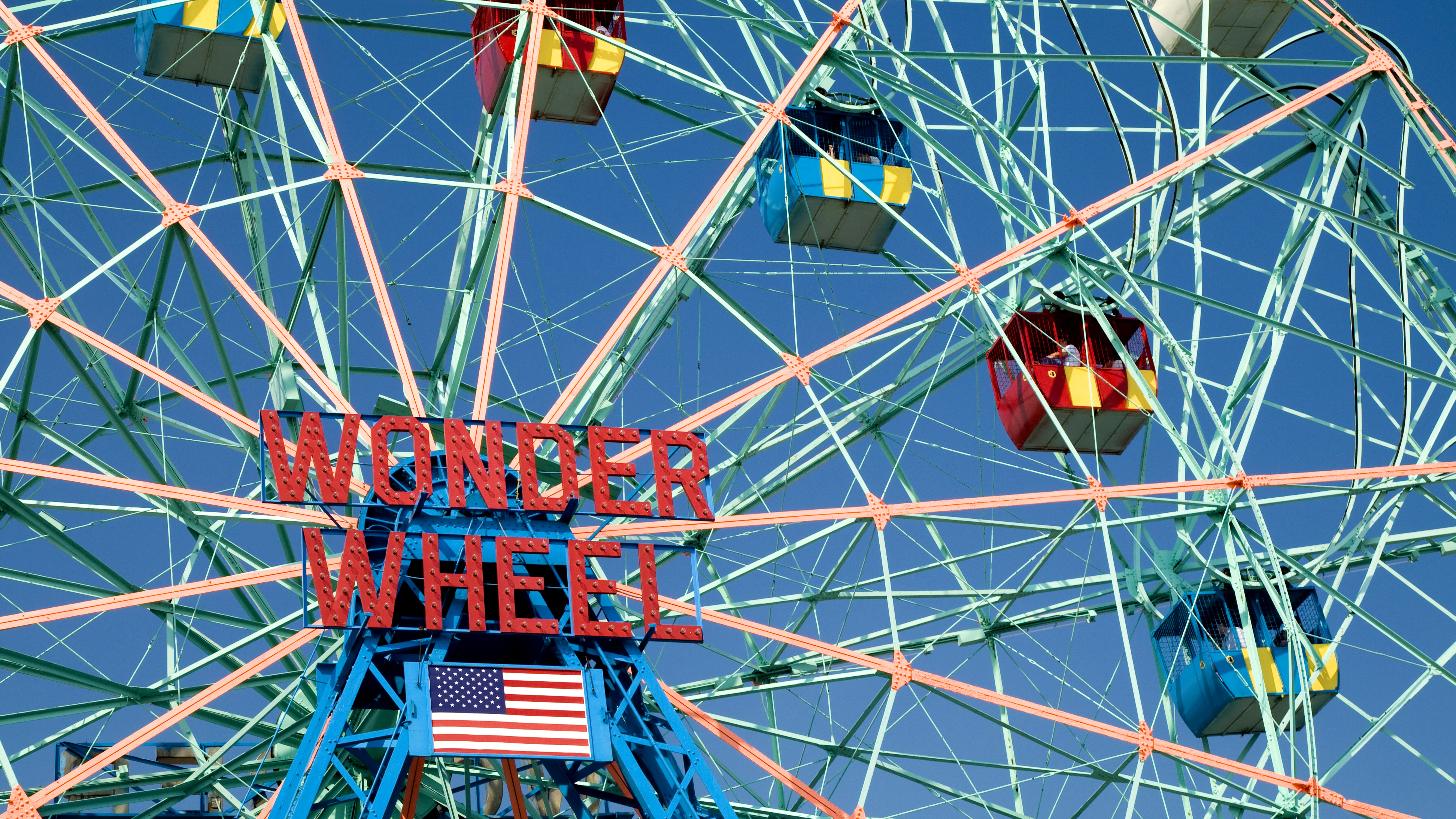As people consider what the future of location-based entertainment in a post-coronavirus world looks like, owners and operators of theme parks, entertainment venues, and family entertainment centers consider how they will run their businesses in whatever version of the “new normal” we will have.
This white paper was written in collaboration with Cynthia Sharpe, Principal Cultural Attractions, and Dave Cobb, Principal Creative Development.
Please note: This list is not exhaustive. It doesn’t take into consideration what is needed from an employee/cast member/staff standpoint (such as ensuring employees are virus-free before entering the workplace). It does not consider an obvious primary option for operators in a post-COVID-19 world, what we call, “pass to play.” In this (very short) version of this white paper, all visitors would be required to show they had been vaccinated for COVID-19. How this verification would be done so it would be clearly legitimate, easy to view for the park employee, and easy to provide for the guest remains to be seen. (In China, residents there use an app with a QR code that is scanned at the door to verify identity and travel of the individual at most shops, restaurants, and office buildings.)
Here are seven areas for owners/operators to consider when reopening their parks and projects. This is what it’ll take to get open again–for now, not forever–and it’ll require more staff with fewer guests, a proposition that may be hard to swallow.
1. Ticketing, Entry, Security & Park Capacity
Park capacity will be a huge concern in a post-coronavirus world. Crowds on a scale typically seen in the mega parks on both coasts and internationally will need to be adjusted to allow for social distancing. While many theme parks and some larger museums have had success at shifting guests to ticketing in advance via an app or website, many smaller institutions have online ticketing rates at under 10% of all tickets sold.

Not only must physical ticketing, including changing protocols and equipment to support the health and safety of front-line staff, be addressed, but venues will also need to evaluate and potentially redesign their online ticketing experience and platforms to reduce friction and encourage uptake.
In addition to the typical “mag and bag” security (running personal items through a scanner and people through another), security might also need instant forehead temperature scanners to ensure guests are healthy. Guests may need to also wear face masks throughout their visit. Parkwide and abundant hand sanitizer stations–similar to those seen on cruise ships but even more plentiful and obvious–will be necessary.
2. Queues
Near-continuous and visually obvious cleaning of queue railings will be necessary regardless of what methodology is used for attraction queues. With pulsed queues, guests would be given a specific time to return, whether that’s via an app, staggered entry paper ticket, or text message.
When the guest arrives at the attraction they are let in and then they make their way to the load area (either bypassing the queue theming and show areas altogether or allowing for guests to “explore” show-heavy queues).
3. Rides & Attractions

Social distancing will need to happen in rides as well. Ride vehicles may need to be loaded with empty vehicles between guests, while coaster trains will need to consider empty rows and seats between riders, and all vehicles will need extra time to have seats and touchable surfaces sanitized before boarding. These factors alone will greatly reduce the THRC of rides and attractions, which will have a ripple effect up to the original consideration of the overall park capacity.
4. Interactives

In a post-COVID-19 world, a heavy reliance on touch-based interactive screens is a thing of the past. There simply aren’t enough staffers to constantly be wiping down touchscreens between uses, so these interactives will need to be removed, covered, or modified. (Thinkwell Studio Montréal is developing two initiatives to deal with this issue. The first is a gesture-based retrofit that allows guests to interact with touchscreen-based digital displays, eliminating the need for touching a surface at all. The second initiative is called interactive mirroring. It puts the interactive on a guests’ mobile device, allowing them to touch their own device to input to the interactive. Both of these solutions are retrofits to many interactive stations in museums, theme parks, and other applications.)
Beyond touch screens, this is a real opportunity to consider more holistic, universal-design based approaches to interactivity, from how they can more meaningfully leverage machine learning, gesture-based inputs, and voice commands to the material choices themselves. Interactivity isn’t done for, but we’ll see the next big push forward in its design and use.
5. VR Goggles & 3D Glasses
Will people want a device, like a virtual reality goggle set and headgear at all so close to their eyes, noses, and mouths after the world goes back to some form of normal? Even with obvious cleaning, that puts the technology and the multi-use headgear and goggles uncomfortably close to the guests’ faces. What will happen with VR in public spaces?
The same holds true for 3D glasses. With as many attractions installed around the world that rely on 3D, operators need to consider single-use wrapped 3D glasses as expendables. If more than one 3D attraction exists at a park or complex, selling or giving guests a single pair of reusable glasses at the front gate that visitors keep with them would be ideal.
6. Parades, Spectaculars, & Shows
As some parks consider canceling parades, shows, and fireworks spectaculars due to the density of guests for such presentations, there might be ways to allow these things to continue. First, the peak daily in-park capacity comes into consideration again. Group sizes for these entertainments will be different than they used to be, so that will be one element to reduce some concern. Still, what is to keep people apart?
Just look to Japan for one possible solution. When visitors to theme parks in Japan want to see a parade and hold their place in line they put down a towel or blanket they brought with them, then run off to go on a ride or grab a bite to eat (more on eating in the next category). These spots are respected by all guests. Imagine if park staff taped off areas for groups—each appropriately distanced—to create spaces for guests to view parades or nighttime spectaculars. It would require guests to respect those partitions, but it would allow for the parade or spectacular to continue.
For live shows where seating is provided, social distancing is easier by simply putting a cover over seats, closing entire rows, and asking guests to put 2-4 seats between them and the next group. Loading times will need to be extended in order to ensure proper compliance with the plan. Using shows as a way to manage crowds and provide a “pressure valve” remains important.
7. Dining & Shopping

The capacity of shops and restaurants will need to be regulated to ensure social distancing. Marking tables as “out of service” will be required, or simply removing tables and chairs to open up space between diners could be considered as well. Self-service dining (buffets, salad bars, and “fixin’s” stations) will need to be shut for now. Order in advance systems, like those already found in some Disney parks, would help both with reducing time in lines as well as allowing spacing between guests.
Throughout parks, from the main gate to shops and restaurants, a touchless payment solution—like Apple/Google Pay, contactless chips in credit cards that are the standard in many countries outside of the U.S.—will need to be installed and adapted to avoid keypads, card-swiping/insertion, or signing receipts.
With all the considerations to employee and guest safety needed to make a park or entertainment complex safe (both physically and in the minds of the paying public), a lot will need to be done to prepare for reopening in a post-coronavirus world.
Of course, all of these suggestions require the guest to be an active participant in the plans and to willingly comply with these modified operational expectations. Even with all of these challenges and hurdles, we know that location-based social entertainment is going to be more important than ever for our own wellbeing and to help heal our communities. It’s become clear in the past several weeks how beloved these places are and how much we crave social experience.
If you would like to contact Thinkwell to help in your post COVID-19 plans, please contact us.


 This report inevitably led Thinkwell to think about this topic in relation to the company’s other specialized fields. We asked ourselves if we thought these results would carry across the various market segments in which we practice. With such high focus on technology and mobility in our lives today, are guests looking to integrate technology into their visitor experiences? Museums and the visitors they attract are evolving, so Thinkwell asked, is this a space looking for increased digital and mobile interactivity? The 2014 Trend Report honed in specifically on the current museum guest experience and visitors’ expectations and desires for such digital and mobile integration.
This report inevitably led Thinkwell to think about this topic in relation to the company’s other specialized fields. We asked ourselves if we thought these results would carry across the various market segments in which we practice. With such high focus on technology and mobility in our lives today, are guests looking to integrate technology into their visitor experiences? Museums and the visitors they attract are evolving, so Thinkwell asked, is this a space looking for increased digital and mobile interactivity? The 2014 Trend Report honed in specifically on the current museum guest experience and visitors’ expectations and desires for such digital and mobile integration.

